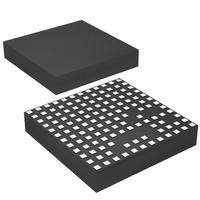LTM4611EV#PBF Linear Technology, LTM4611EV#PBF Datasheet - Page 18

LTM4611EV#PBF
Manufacturer Part Number
LTM4611EV#PBF
Description
IC UMODULE DC/DC LV 15A 133-LGA
Manufacturer
Linear Technology
Series
µModuler
Type
Point of Load (POL) Non-Isolatedr
Datasheet
1.LTM4611EVPBF.pdf
(28 pages)
Specifications of LTM4611EV#PBF
Output
0.8 ~ 5 V
Number Of Outputs
1
Power (watts)
75W
Mounting Type
Surface Mount
Voltage - Input
1.5 ~ 5.5 V
Package / Case
133-LGA
1st Output
0.8 ~ 5 VDC @ 15A
Size / Dimension
0.59" L x 0.59" W x 0.17" H (15mm x 15mm x 4.32mm)
Power (watts) - Rated
75W
Operating Temperature
-40°C ~ 125°C
Efficiency
94%
Lead Free Status / RoHS Status
Lead free / RoHS Compliant
3rd Output
-
2nd Output
-
Available stocks
Company
Part Number
Manufacturer
Quantity
Price
LTM4611
applicaTions inForMaTion
4. θ
Given these definitions, it should now be apparent that
none of these thermal coefficients reflects an actual
physical operating condition of a µModule. Thus, none
of them can be individually used to accurately predict the
thermal performance of the product. Likewise, it would
be inappropriate to attempt to use any one coefficient to
correlate to the junction temperature versus load graphs
given in the product’s data sheet. The only appropriate
way to use the coefficients is to run a detailed thermal
analysis, such as FEA, which considers all of the thermal
resistances simultaneously.
A graphical representation of these thermal resistances
is given in Figure 5.
The blue resistances are contained within the µModule,
and the green are outside.
The die temperature of the LTM4611 must be lower than
the maximum rating of 125°C, so care should be taken in
the layout of the circuit to ensure good heat sinking of the
LTM4611. The bulk of the heat flow out of the LTM4611 is
through the bottom of the module and the LGA pads into
almost all of the heat flows through the bottom of the
µModule and into the board, and is really the sum of
the θ
of the part through the solder joints and through a por-
tion of the board. The board temperature is measured
a specified distance from the package, using a two
sided, two layer board. This board is described in JESD
51-9.
JB
is the junction-to-board thermal resistance where
JCbottom
and the thermal resistance of the bottom
JUNCTION
µMODULE
(BOTTOM) RESISTANCE
JUNCTION-TO-CASE
JUNCTION-TO-AMBIENT RESISTANCE (JESD 51-9 DEFINED BOARD)
JUNCTION-TO-BOARD RESISTANCE
JUNCTION-TO-CASE (TOP)
RESISTANCE
CASE (BOTTOM)-TO-BOARD
RESISTANCE
Figure 6
the printed circuit board. Consequently, a poor printed
circuit board design can cause excessive heating, result-
ing in impaired performance or reliability. Please refer to
the PCB Layout section for printed circuit board design
suggestions
The 1.2V, 2.5V and 3.3V power loss curves in Figures 7
and 8 can be used in coordination with the load current
derating curves in Figures 9 to 16 for calculating an
approximate θ
with various heat sinking and air flow conditions, as
evaluated on the aforementioned 4-layer FR4 PCB. The
power loss curves are taken at room temperature, and
are increased with multiplicative factors with ambient
temperature. These approximate factors are: 1 up to 50°C;
1.1 for 60°C; 1.15 for 70°C; 1.2 for 80°C; 1.25 for
90°C; 1.3 for 100°C; 1.35 for 110°C and 1.4 for 120°C.
The derating curves are plotted with the output current
starting at 15A and the ambient temperature at 55°C. The
output voltages are 1.2V, 2.5V and 3.3V. These are chosen
to include the lower and higher output voltage ranges for
correlating the thermal resistance. Thermal models are
derived from several temperature measurements in a
controlled temperature chamber along with thermal mod-
eling analysis. The junction temperatures are monitored
while ambient temperature is increased with and without
air flow, and with and without a heat sink attached with
thermally conductive adhesive tape. The BGA heat sinks
evaluated in Table 5 yield very comparable performance
in laminar airflow despite being visibly different in con-
struction and form factor. The power loss increase with
CASE (TOP)-TO-AMBIENT
BOARD-TO-AMBIENT
JA
RESISTANCE
RESISTANCE
thermal resistance for the LTM4611
4611 F06
A t
4611f













